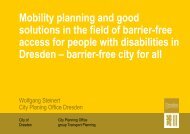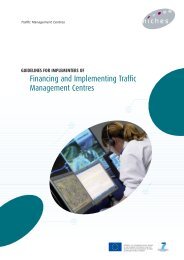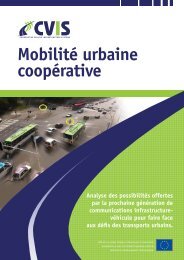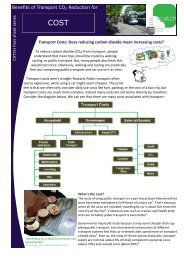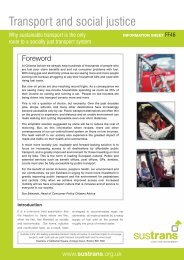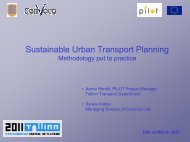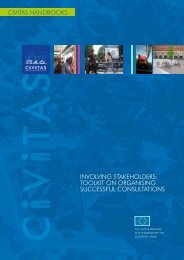EU funds for roads - CEDR
EU funds for roads - CEDR
EU funds for roads - CEDR
You also want an ePaper? Increase the reach of your titles
YUMPU automatically turns print PDFs into web optimized ePapers that Google loves.
Page 55 / 80<br />
Fig. 23: Rion-Antirrion bridge (Greece), which was co-funded by the ERDF<br />
3 Conclusions<br />
a) Very important <strong>EU</strong> <strong>funds</strong> are available <strong>for</strong> road projects in the <strong>EU</strong> member states, which are<br />
mainly allocated to the regions/states that need the assistance of the <strong>EU</strong> (i.e. to the less<br />
developed ones) and/or lacking the infrastructures that are necessary <strong>for</strong> the promotion of<br />
the strategic/sectoral goals of the <strong>EU</strong> <strong>for</strong> the <strong>EU</strong> 70 .<br />
b) The main <strong>EU</strong> <strong>funds</strong> providing financing <strong>for</strong> road projects in the <strong>EU</strong> are: The European<br />
Regional Development Fund (ERDF), the Cohesion Fund (CF), and the TEN-T Fund. Their<br />
operation is governed by specific regulations and directives that are applicable to all <strong>EU</strong><br />
member states. It is widely felt that these legal documents (together with all other<br />
explanatory vademecums) have already created and are imposing a very ‘heavy’<br />
management system.<br />
c) There are also important <strong>EU</strong> <strong>funds</strong> available <strong>for</strong> non-<strong>EU</strong> countries, depending on their<br />
relations and specific cooperation agreements with the <strong>EU</strong>. Naturally, the <strong>EU</strong> <strong>funds</strong> that are<br />
made available to rich non-<strong>EU</strong> countries/regions are much smaller (if even existent) than<br />
those made available to less developed (poorer) ones.<br />
d) The most important <strong>EU</strong> <strong>funds</strong> providing financing of road projects in non-<strong>EU</strong> countries are at<br />
present the Instrument <strong>for</strong> Pre-Accession (IPA), the European Neighbourhood and<br />
Partnership Instrument (ENPI), and the European Development Fund (EDF). The shifting of<br />
the ‘technical assistance’ types of <strong>EU</strong> financed projects to ‘technical cooperation’ projects (in<br />
which the recipient countries are gradually led to participate in the financing of the projects)<br />
is a positive step towards more ownership and thus better quality of the final outcomes.<br />
70 Such as the increase of mobility, development of the Trans-European Road Network (TERN), increase of<br />
competitiveness and employment, protection of the environment, increase of <strong>EU</strong> internal cohesion etc.<br />
<strong>EU</strong> <strong>funds</strong> <strong>for</strong> <strong>roads</strong>





